October 21, 2021
Fall Seeds Bring Spring Flowers!
Some days it sure seems like fall is never going to get here. And then, in mere minutes, a cold front whooshes in to pep up our steps. Plants leap into action once again. Late to the party this year, red spider lily (Lycoris radiata) finally emerged, albeit sparsely, due to late summer’s sparse rainfall.
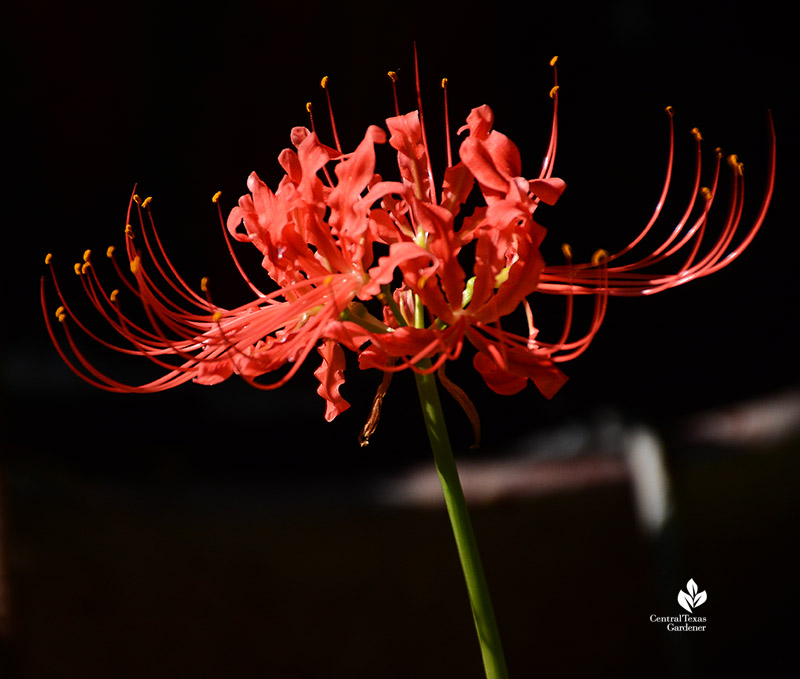
Thanks to a few rain spurts, a parched median strip transformed overnight when hundreds of rain lilies (Zephyranthes chlorosolen) sprang up.
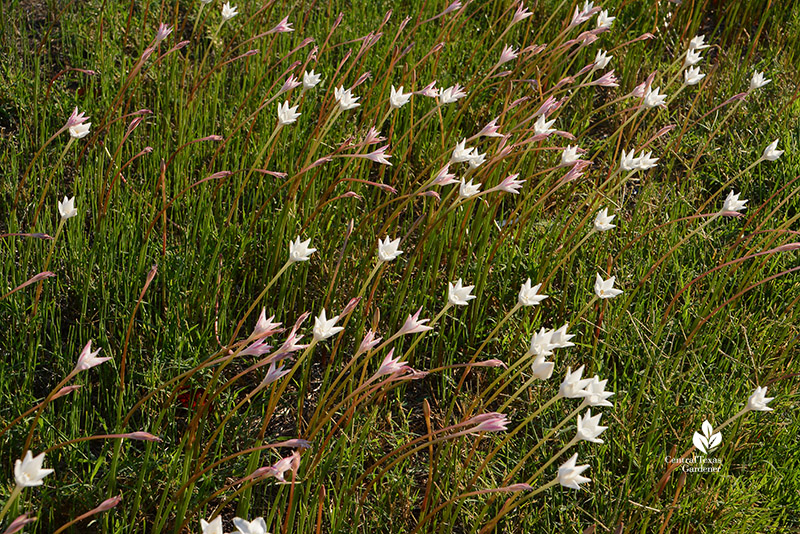
Native goldenrod, even growing wild along drainage runways, helps bees fuel up for winter with nectar and pollen.
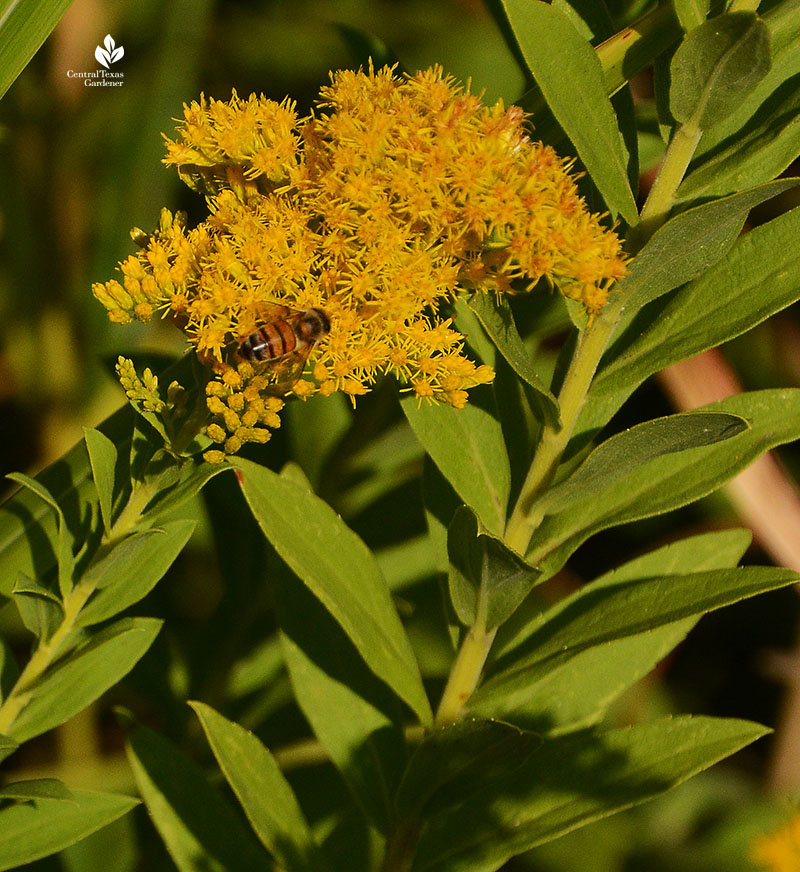
Drought-tough native aromatic asters absolutely exploded this week, extending pollinator feeding fests for weeks.
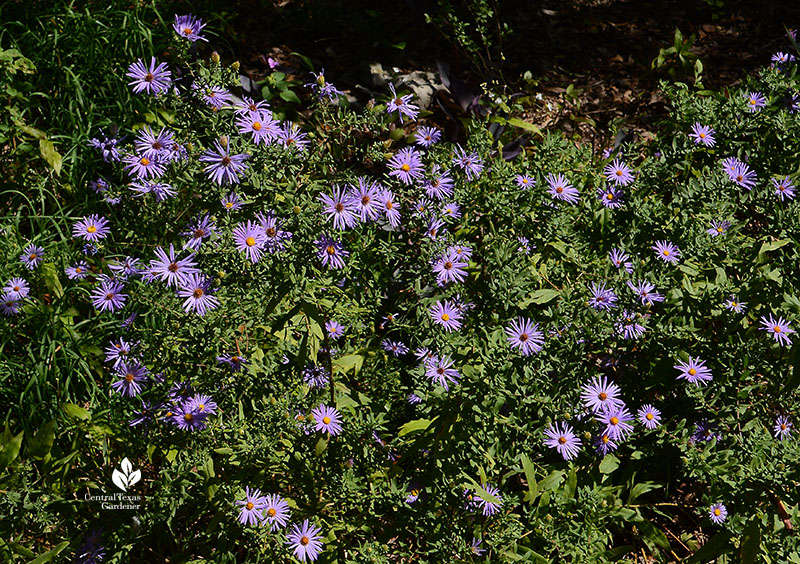
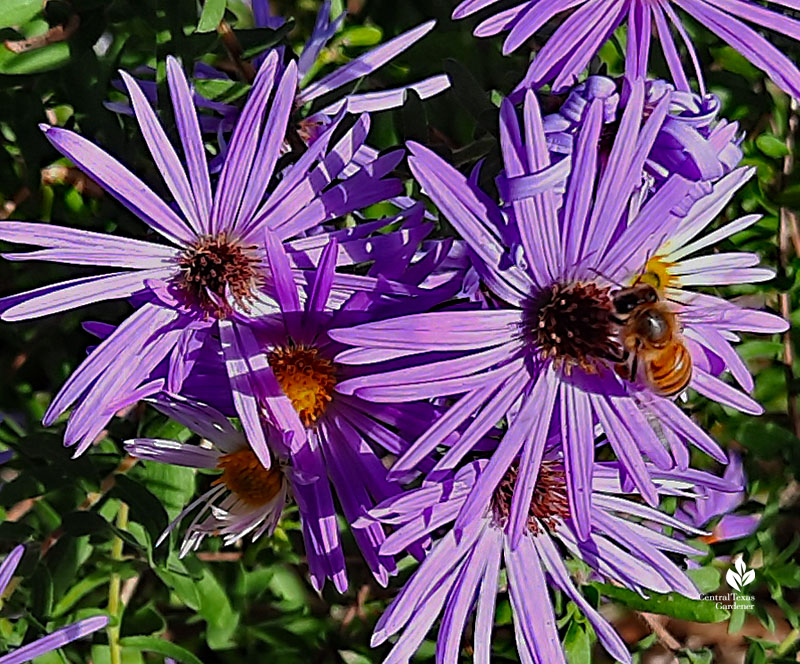
And, as days cool down (sort of!), it’s time to think ahead to dreamy late winter and early spring flowers that enchant the dormant perennial garden and nurture its wildlife.
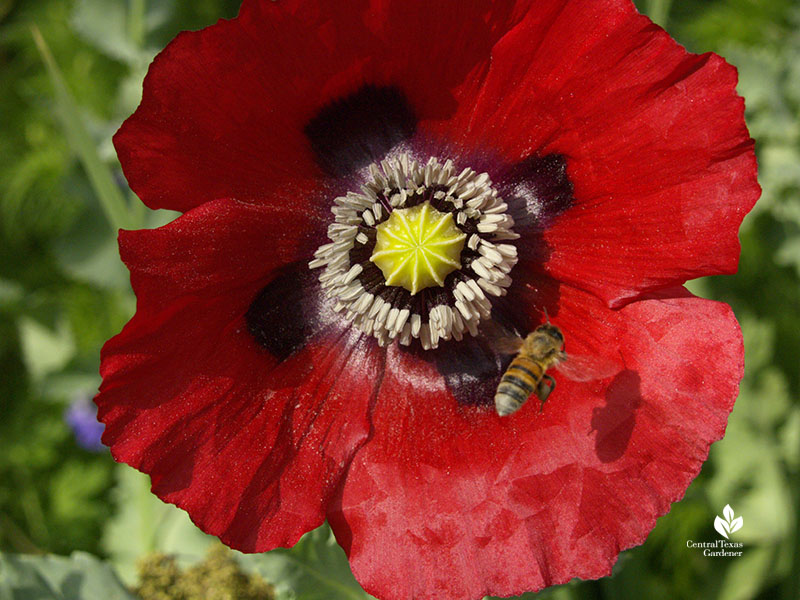
So this week, we visit La Otra Flora Laura Brennand’s small garden, where she shows us how to seed spring flowers—including those tricky poppies—and plant beautiful bulbs for successive bouquets.
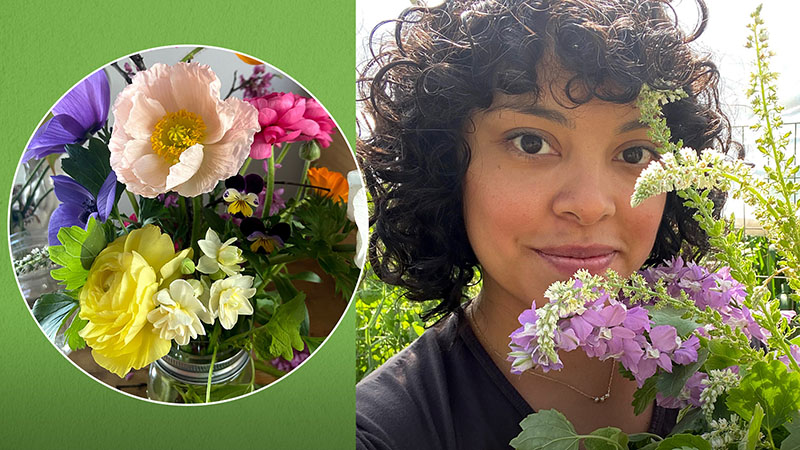
Last spring, Laura showed us her cool weather cut flowers and how to include them in arrangements.
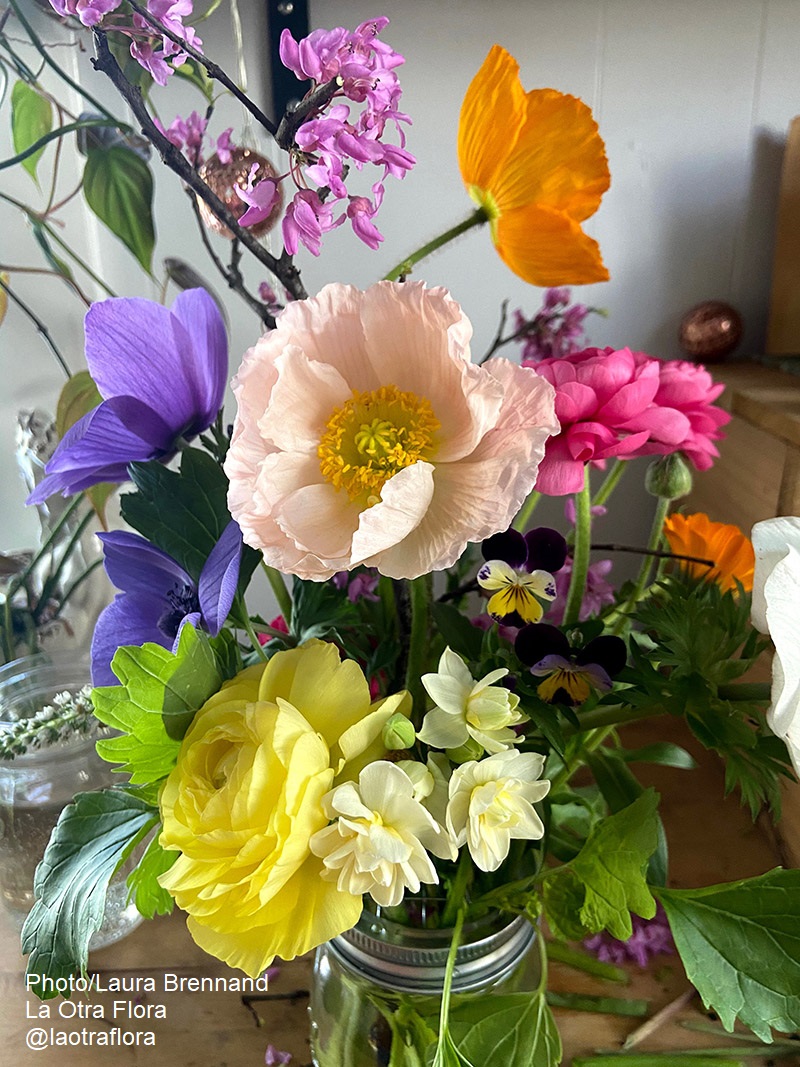
Last week we headed back on a misty morning, this time a first since fall 2019 to unite with director Ed Fuentes and Robert Moorhead.
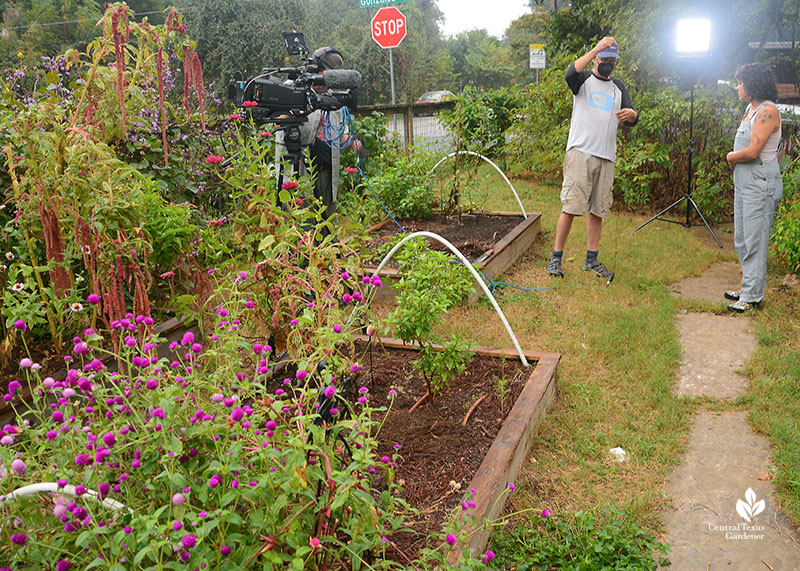
Laura’s summer flowers are fading—though she collects seeds for next year. Purple hyacinth bean vine blankets a fence; its flowers and young leaves perfect in salads. When the bright purple seed pods brown up, she’ll save some to plant next April. Seeds that fall to the ground may come up on their own.
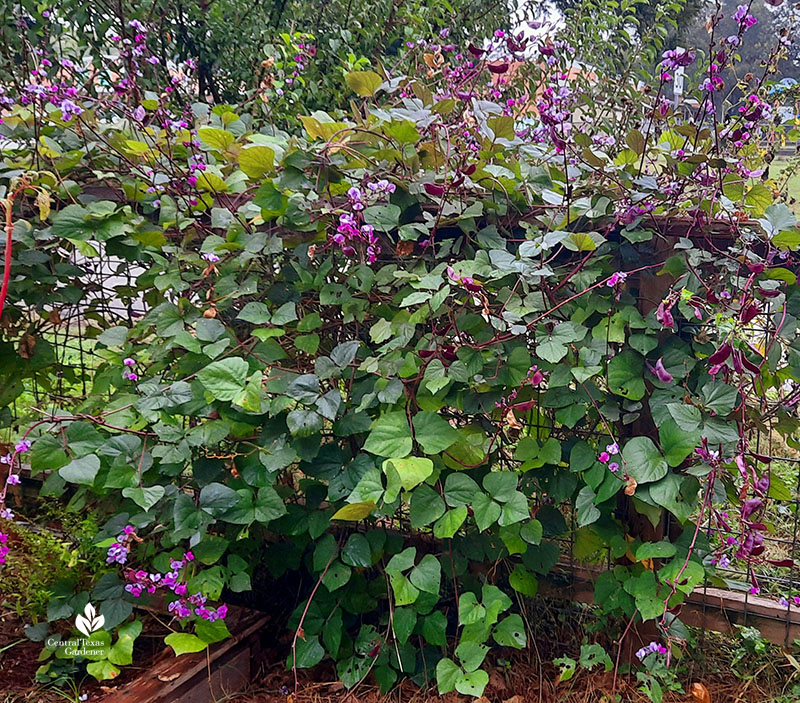
Gentle fragrance greeted us, too: a gift from almond verbena’s (Aloysia virgata) generous flower spikes, signaling every bee and butterfly around when the sun returned. This large shrub/small tree made it through the February hard freeze, as did my own. We just cut them almost to the ground, which I do most years anyway.
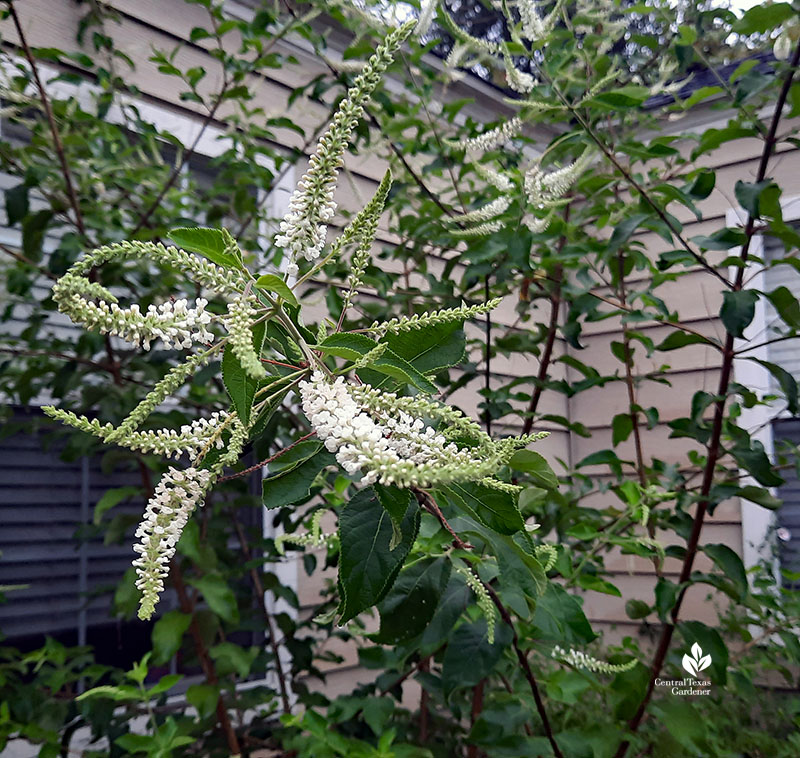
Laura started a cut flower garden in her small yard while pregnant with her son, now four (and very garden savvy!). When her random, new-mom-neglected plantings flourished, she discovered another new love. She grew her plant passion into La Otra Flora as a flower garden consultant and custom cut flower garden designer. The key thing she’ll tell you: soil first, plants second.
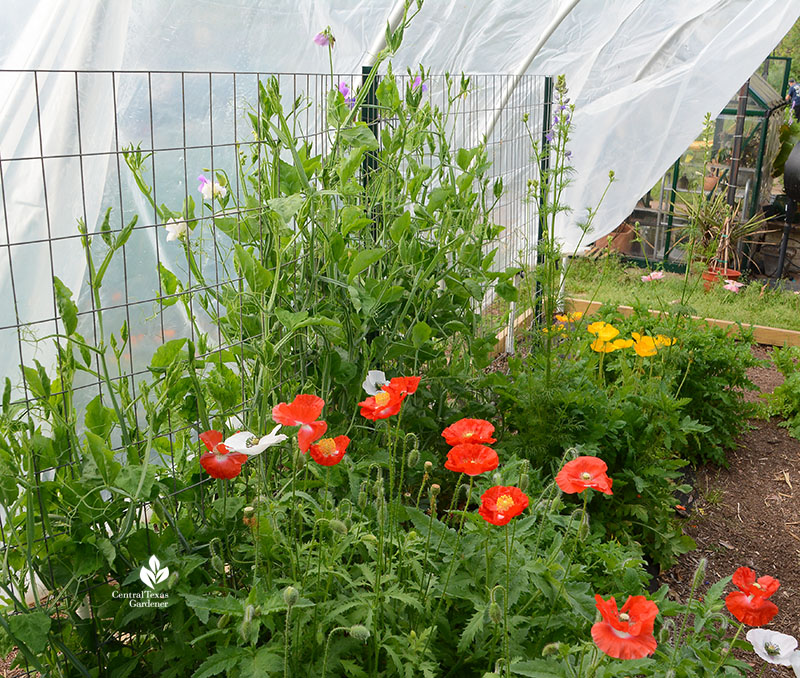
She shows us how she fluffs up her soil after its busy summer. Rather than pulling up tired-out annuals, she cut them back to let their roots naturally continue soil nourishment. Then she gently folded in a layer of compost. In this spot, she demonstrated how to plant one of her spring favorites, Nigella (Love-in-a-Mist).
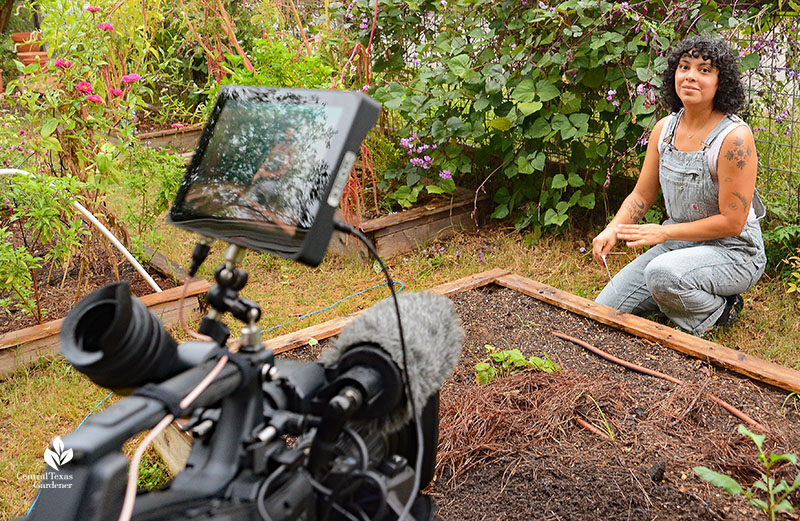
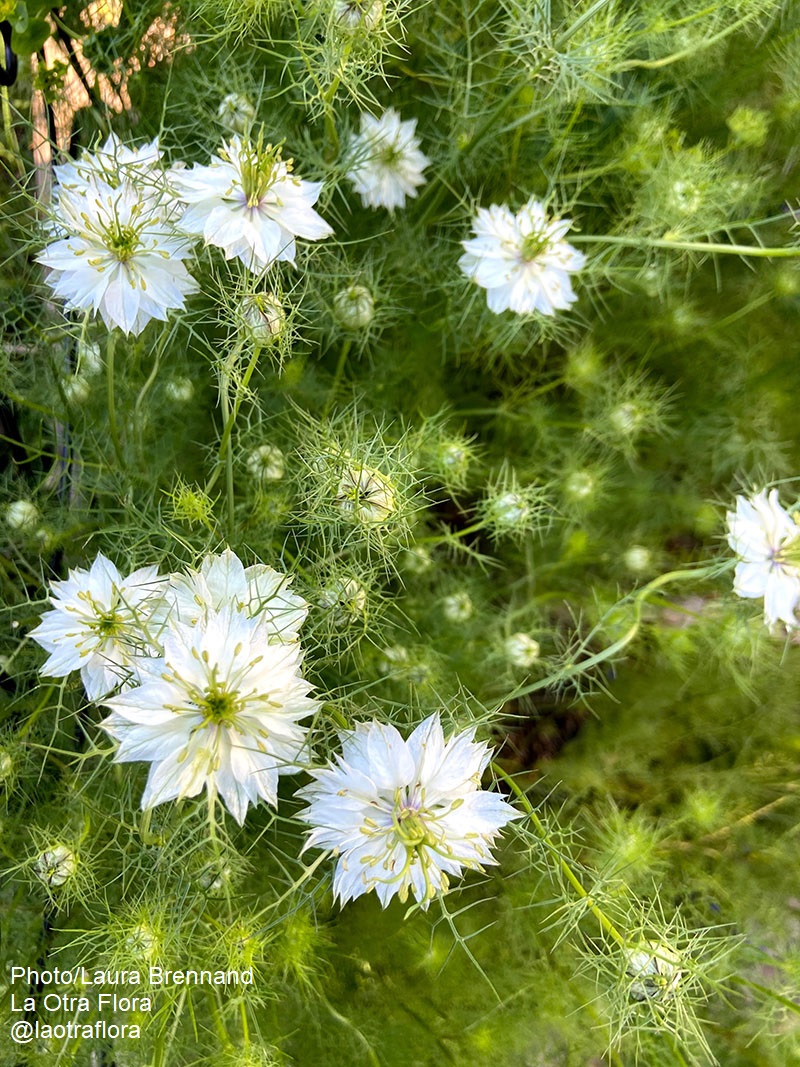
Now, and the next few weeks, we can also seed larkspur, bachelor buttons, delphinium, sweet peas, nasturtium, pansies, and alyssum, along with wildflowers. For every seed—flower or vegetable—it’s essential to note its planting depth, since some need deeper soil cover and others just a light topping. Note: since we’re supposed to hit the 90s again, do keep newly planted seeds and sprouting seedlings gently watered!
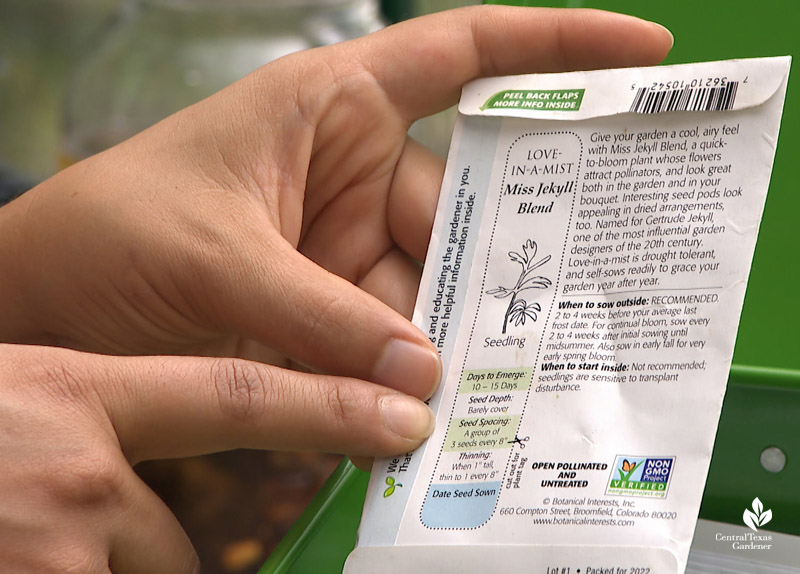
And that’s where gardeners can fail at poppies, like this Shirley or corn poppy.
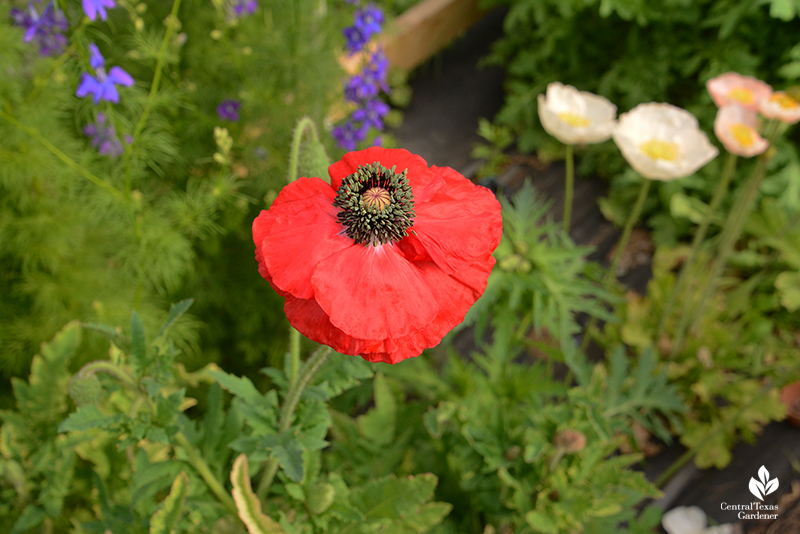
First, she told us that poppies need super soft, fertile, fluffy soil. Next, don’t plant too early. “I usually plant somewhere in November. There’s an old garden tale that in order to get successful poppies, you need to find the dreariest, rainiest, ugliest day in November. And that’s when you plant your poppies. The soil needs to be nice and moist. And the reason is because the poppy seeds are so, so tiny and they can get easily washed away or dried out,” she advised.
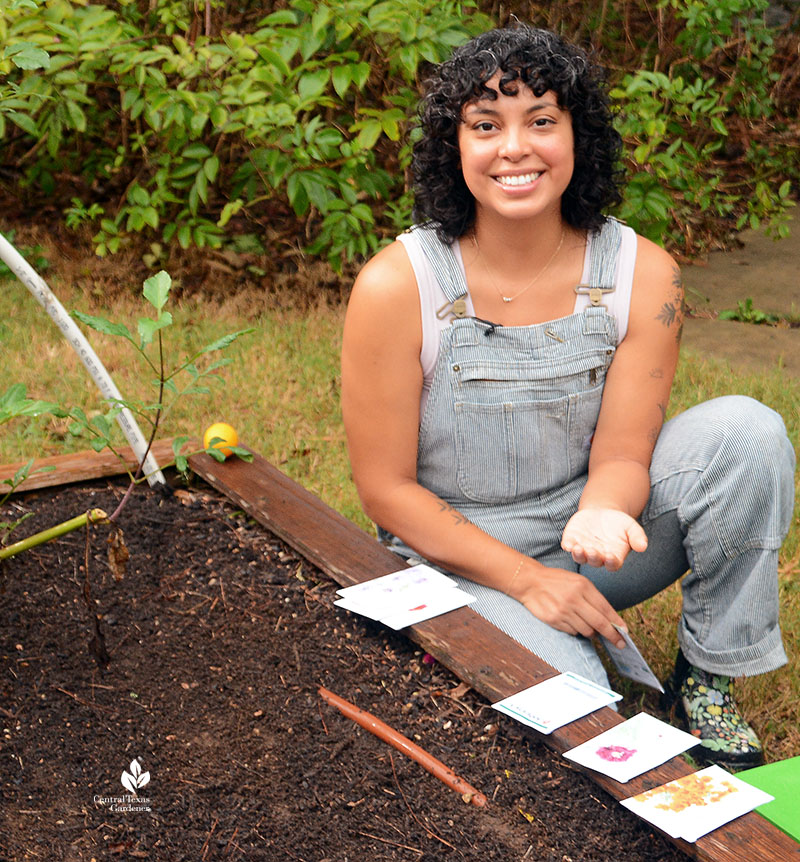
Finally—and this is absolutely critical—merely scatter the dust-sized seeds on the surface of your soil and gently rake or tamp in. She recommends California poppies for one that’s really bright and showy. Note that their leaves are very fine and feathery.
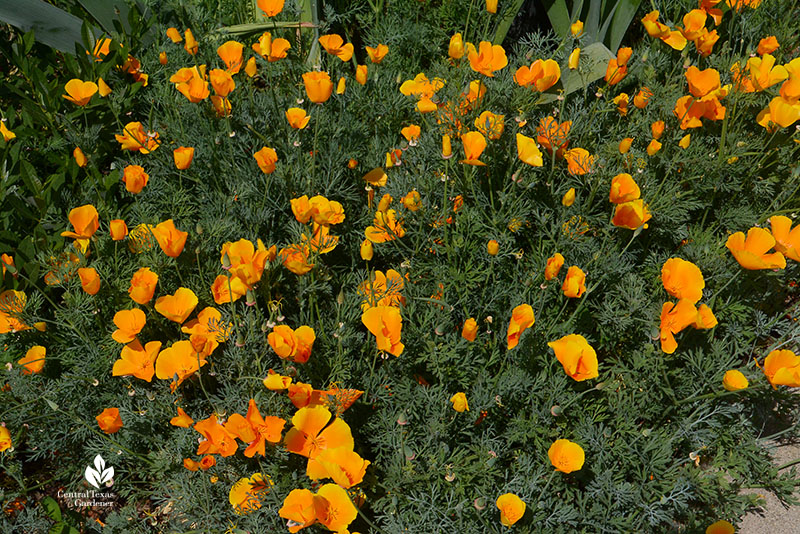
Dramatic Black Swan and Lauren’s Grape are opium or breadseed poppies, Papaver somniferum.
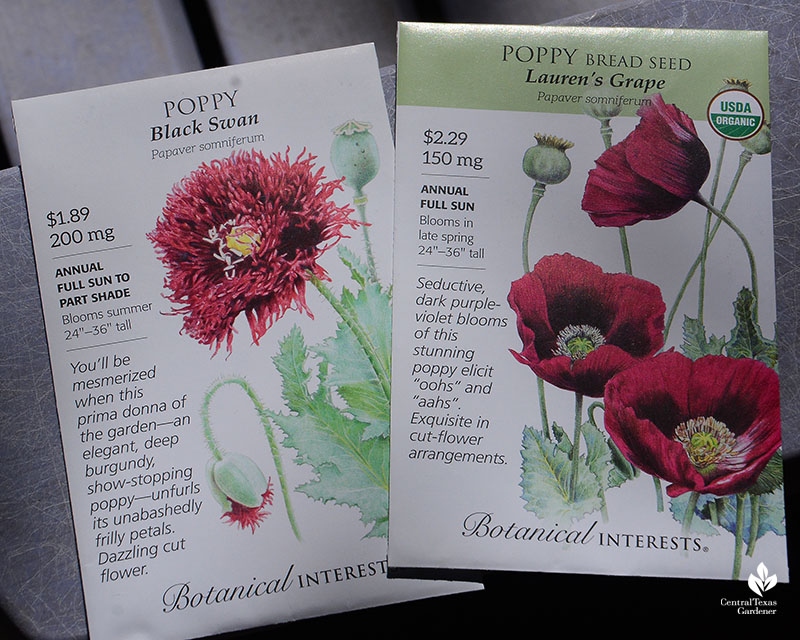
One of her favorites is Amazing Grey, the Mother-of-Pearl poppy. These are called Shirley or corn poppies, Papaver rhoeas. Many of the red poppies you get are these species.
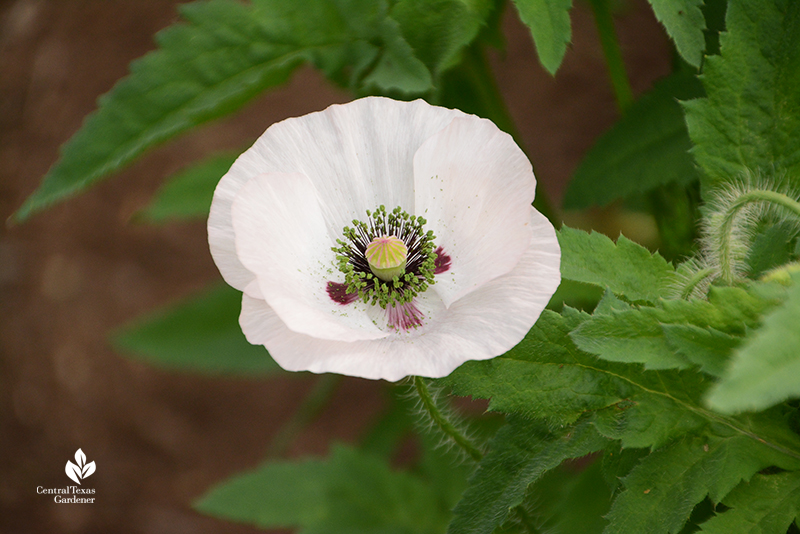
For cutting poppies, Laura recommends Iceland poppies (Papaver nudicale) for their thick, strong stems.
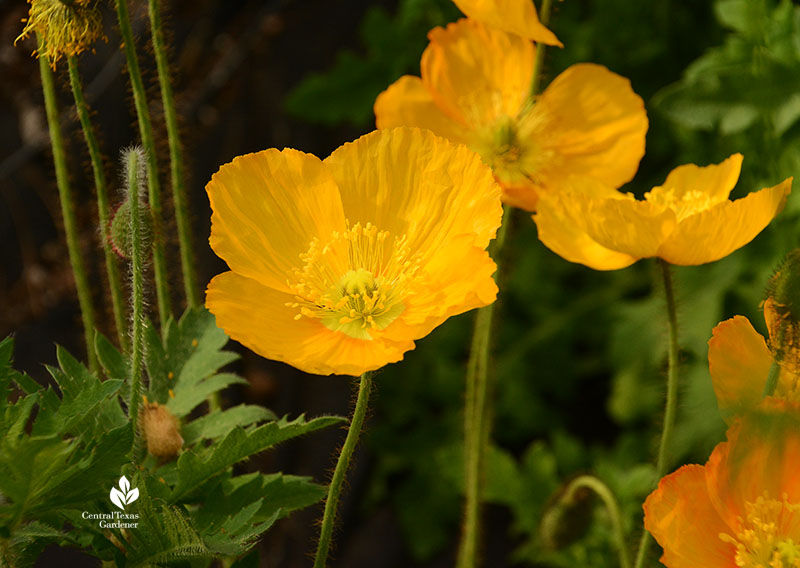
Laura also starts seeds in her small greenhouse.
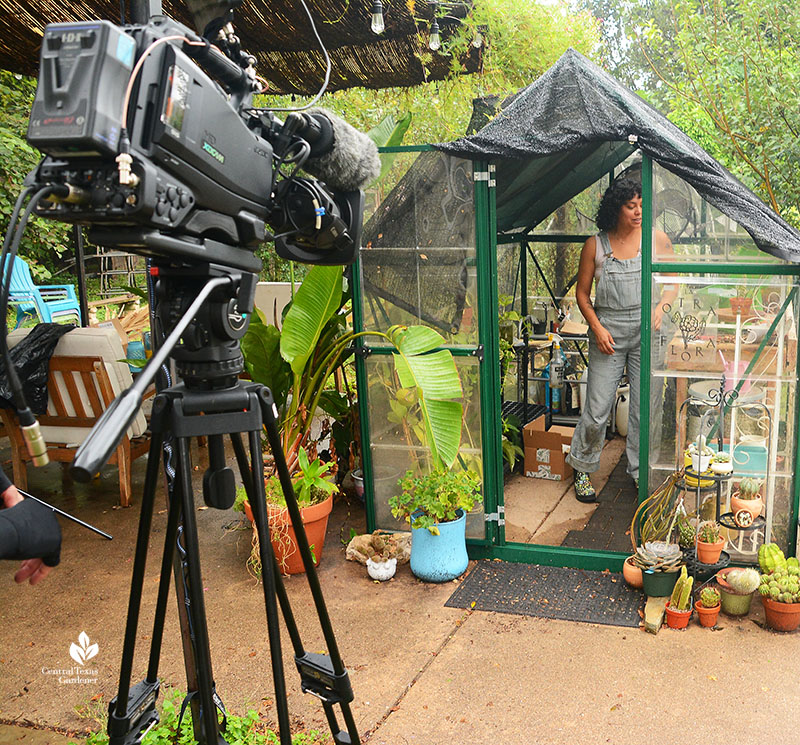
She prefers to use coconut coir as her medium rather than a peat-based product, breaking it up and moistening before filling her cell seed starter trays. This allows flexibility in timing, protection from dramatic weather, successive sowing, and a backup in case of squirrels!
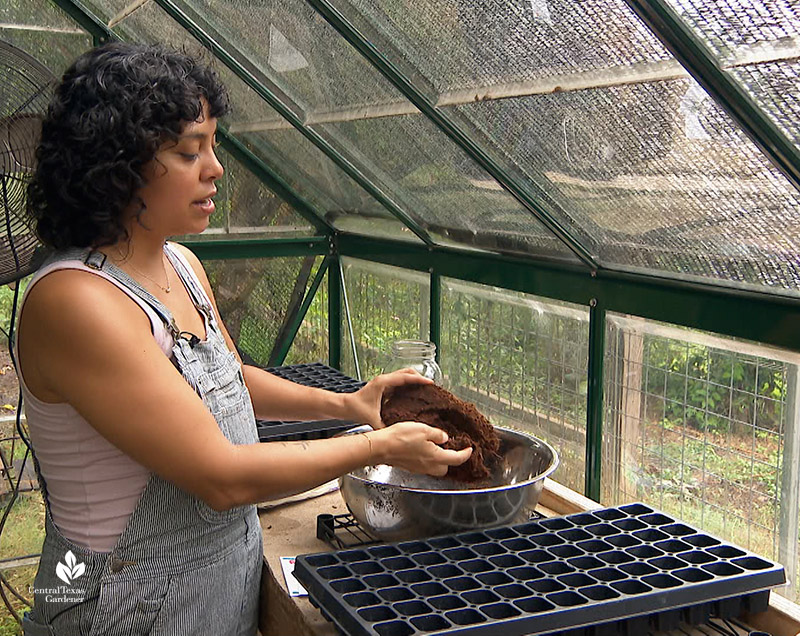
Let’s not forget spring bulbs, which we can plant any time in October and November. Laura likes to pre-sprout anemones to give them a head start. (Anemones are actually corms, but generally called “bulbs.” They were one of the first I ever planted, my gateway to spring bulbs!)
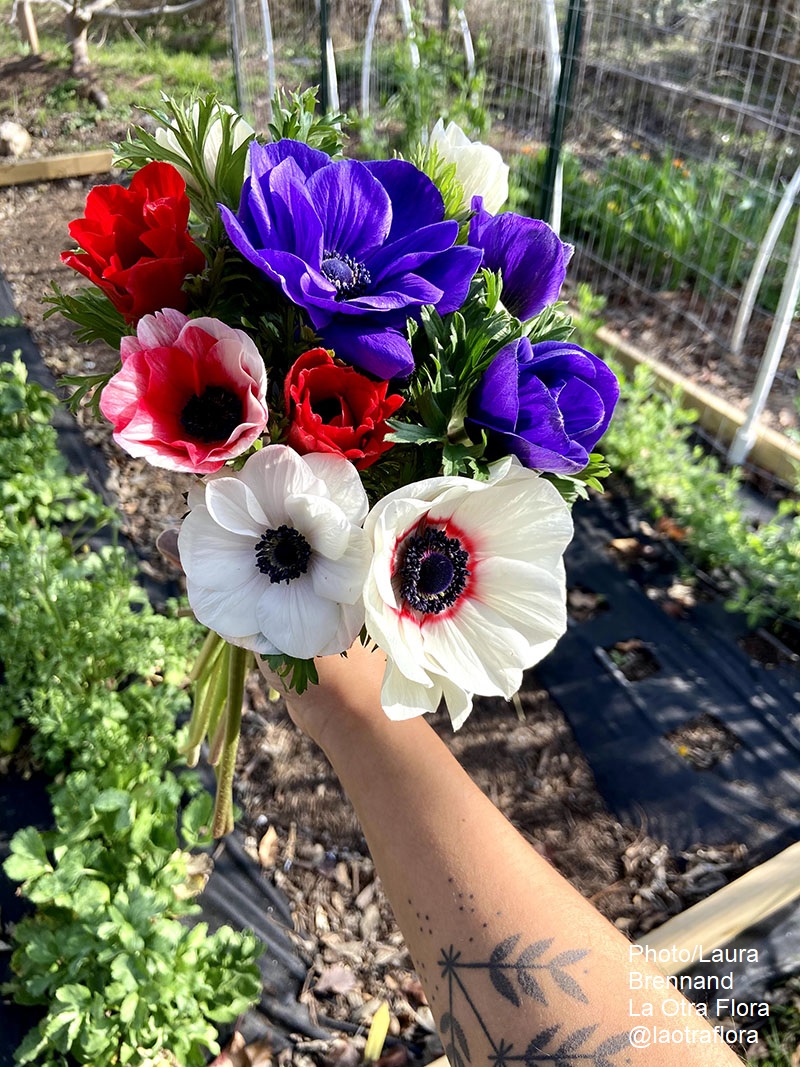
She and I are big fans of fragrant Narcissus ‘Erlicheer,’ one of the early bloomers and so reliable in Central Texas.
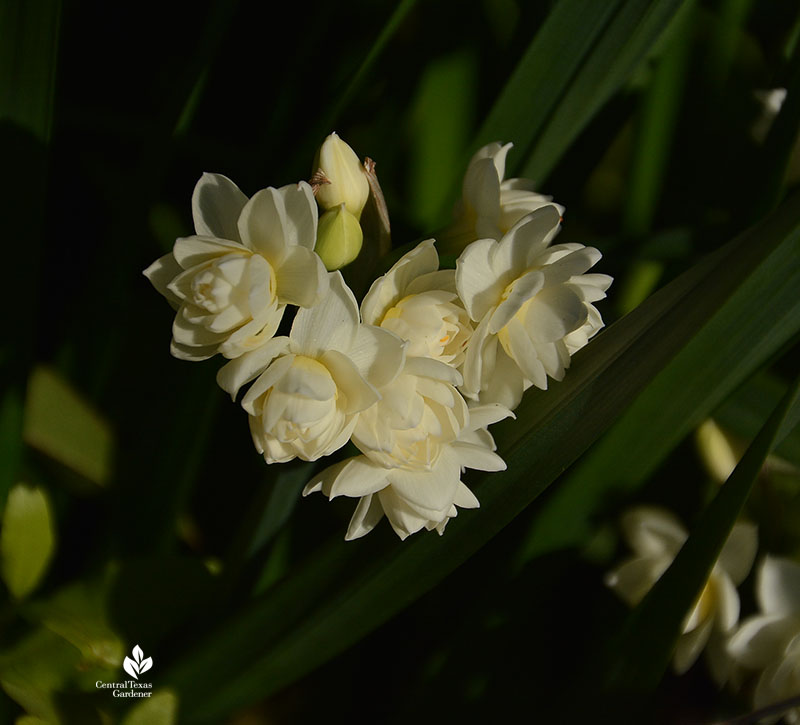
To help you get growing, Laura advises keeping a journal, however you want to do it. It’s invaluable to remember varieties that worked well, when you planted, how long it took to germinate and flower, how long they lasted, and what problems you encountered.
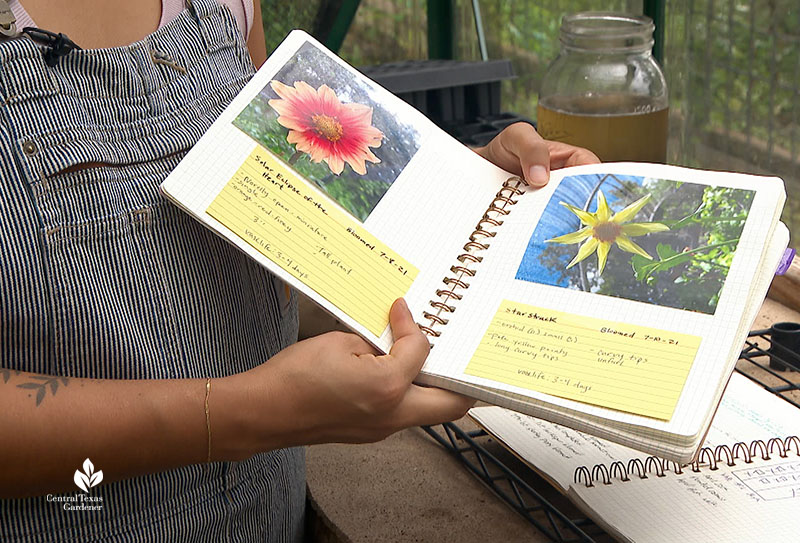
I still have my first homemade journal, where, like Laura, I drew plans, noted blooming dates, and even wrote little stories about each plant. I love to revisit it from time to time to remember how my journey evolved!
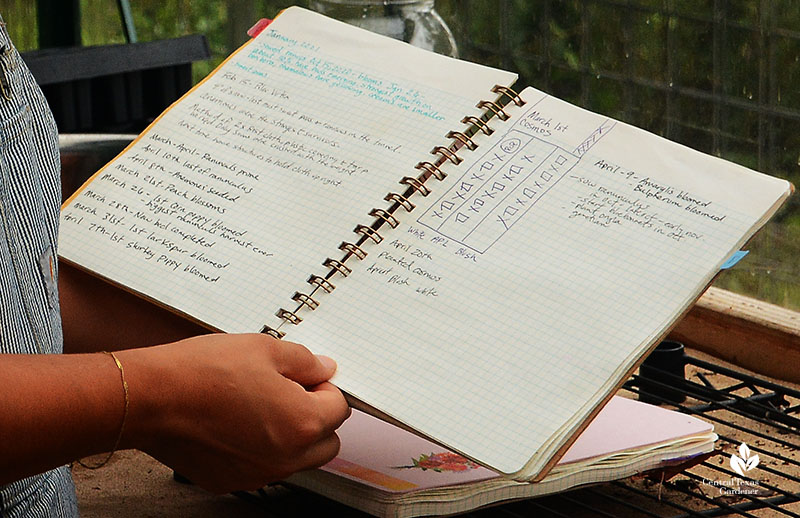
But I do not have a nicely organized seed box like Laura’s! Well, okay, I’ve got a container for them, and now and then, they’re organized. For a few minutes.
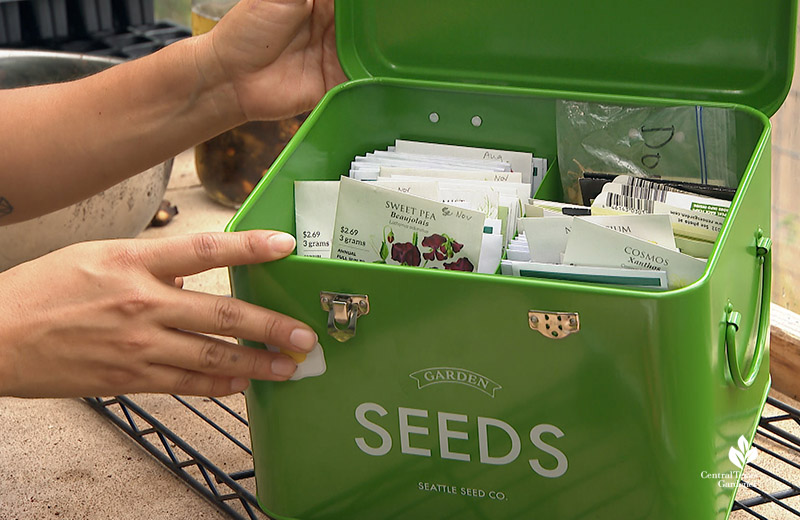
Check out her website for her garden diary and to sign up for her garden consult and design services. Follow her on Instagram to watch her garden across the year.
And watch our garden visit now!
Thanks for stopping by! See you next week, Linda

